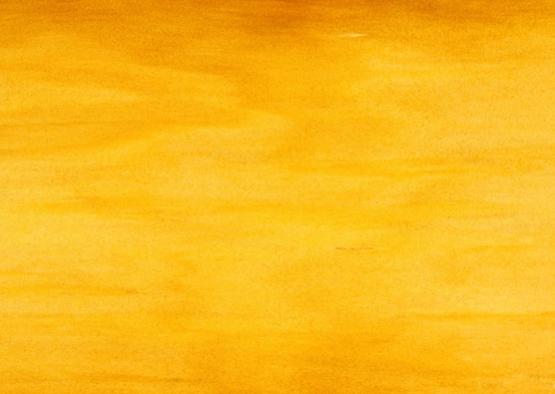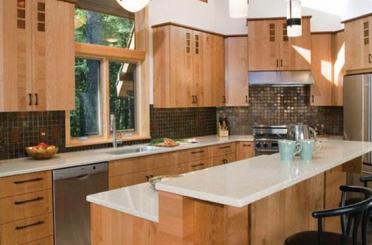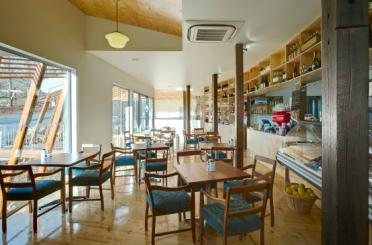Southern mahogany is a native Australian hardwood popularly used for indoor and outdoor applications as well as furniture and cabinetry.
Bangalay (NSW), Gippsland Mahogany (Vic), Woollybutt, Swamp Mahogany or Mahogany Gum.
Eucalyptus botryoides

Southern mahogany is a large, fast-growing species indigenous to coastal south eastern Australia, from Bairnsdale in Victoria to north of Newcastle in NSW. It is closely related to Sydney blue gum and is valued for its rapid growth, tolerance of frost and striking red wood.
An excellent timber tree, it has deep pink to red-brown heartwood with distinctively paler sapwood. The timber is hard, strong and dense with a medium, even texture and interlocking grain. It is durable and lyctid borers rarely attack the sapwood.
Southern mahogany seasons readily. It turns, machines, and glues well but can blunt knives and saws more quickly than other eucalypts. It is prone to severe growth stresses when young and should be quarter sawn to reduce damage. It can be difficult to dry and air-drying in protected stacks can reduce its susceptibility to end splitting and collapse.
The timber is used in cabinetry, furniture, flooring, decking, and veneer applications as well as general construction, poles and firewood. Historically it was used in heavy construction for sleepers and posts.
Shrinkage
| Very Low | Low | Medium | High | Very High | |
|---|---|---|---|---|---|

|

|
||||
Tangential : |
9.80%
|
||||
Radial : |
5.10%
|
||||
Unit Movement Tangential: |
0.37%
|
||||
Unit Movement Radial: |
0.28%
|
Strength Group

Very High |
High |
Reasonably High |
Medium High |
Medium |
Reasonably Low |
Low |
Very Low |
||
Unseasoned: |
S1 |
S2 |
S3 |
S4 |
S5 |
S6 |
S7 |
S8 |
|
|---|---|---|---|---|---|---|---|---|---|
 |
|||||||||
Seasoned: |
SD1 |
SD2 |
SD3 |
SD4 |
SD5 |
SD6 |
SD7 |
SD8 |
|
 |
Stress Grade

| Structural No. 1 |
Structural No. 2 |
Structural No. 3 |
Structural No. 4 |
Structural No. 5 |
|
Unseasoned: |
F27 |
F17 |
F14 |
F11 |
F8 |
Seasoned: |
F27 |
F22 |
F17 |
F14 |
F11 |
Density per Standard

Seasoned: |
920kg/m3
|
|---|---|
Unseasoned: |
1200kg/m3
|
Joint Group

Very High |
High |
Reasonably High |
Medium |
Low |
Very Low |
|
Unseasoned: |
J1 |
J2 |
J3 |
J4 |
J5 |
J6 |
|---|---|---|---|---|---|---|
 |
||||||
Seasoned: |
JD1 |
JD2 |
JD3 |
JD4 |
JD5 |
JD6 |
 |
Colour

| White, yellow, pale straw to light brown | Pink to pink brown | Light to dark red | Brown, chocolate, mottled or streaky | |
 |
||||
Mechanical Properties
Modulus of Rupture - Unseasoned: |
84
|
|---|---|
Modulus of Rupture - Seasoned: |
130
|
Modulus of Elasticity - Unseasoned: |
15
|
Modulus of Elasticity - Seasoned: |
18
|
Maximum Crushing Strength - Unseasoned:  |
46
|
Maximum Crushing Strength - Seasoned: |
77
|
Impact - Unseasoned: |
18
|
Impact - Seasoned: |
18
|
Toughness - Unseasoned: |
Medium - 15 - 24 Nm
|
Toughness - Seasoned: |
Medium - 15 - 24 Nm
|
Hardness - Unseasoned: |
7.0
|
Hardness - Seasoned: |
9.0
|
Durability
| Low | Moderate | Reasonably High | High | |
| (0 - 5 yrs) | (5 - 15 yrs) | (15 - 25 yrs) | (more than 25 yrs) | |
In-Ground: |
 |
|||
| (0 - 7 yrs) | (7 - 15 yrs) | (15 - 40 yrs) | (More than 40 yrs) | |
Above ground: |
 |
|||
| (0 - 20 yrs, usually < 5) | (21 - 40 yrs) | (41 - 64 yrs) | (More than 60 yrs) | |
Marine Borer Resistance: |
Lyctid Borer Susceptibility: |
Not Susceptible |
|---|---|
Lyctid Borer Susceptibility - Other: |
|
Termite Resistance: |
Resistant
|
Fire Properties
| 1 - non-combustible | 2 - reasonably non-combustible | 3 - slightly combustible | 4 - combustible | |
Fire Properties Group |
Group Number - Other: |
3 if used on MDF or particleboard ≥12mm; veneer thickness 0.6-0.85mm
|
|---|---|
Average Specific Extinction Area: |
<250
|
Bushfire Resistance: |
BAL 12.5 and 19 – All AS3959 required applications
|
Southern mahogany features deep pink to red-brown heartwood with a distinctively paler sapwood. The timber is hard, strong and dense with a medium, even texture and interlocking grain.
The timber is used in cabinetry, furniture, flooring, decking and veneer applications, as well as general construction, poles and firewood.
Southern mahogany seasons readily. It turns, machines and glues well but can blunt knives and saws more quickly than other eucalypts. It is prone to severe growth stresses when young and should be quarter sawn to reduce damage. It can be difficult to dry.

Joinery

Structural Timber Poles

Flooring
Allied Forest Products

Classy Timber Flooring

Outlast Timber Supplies



